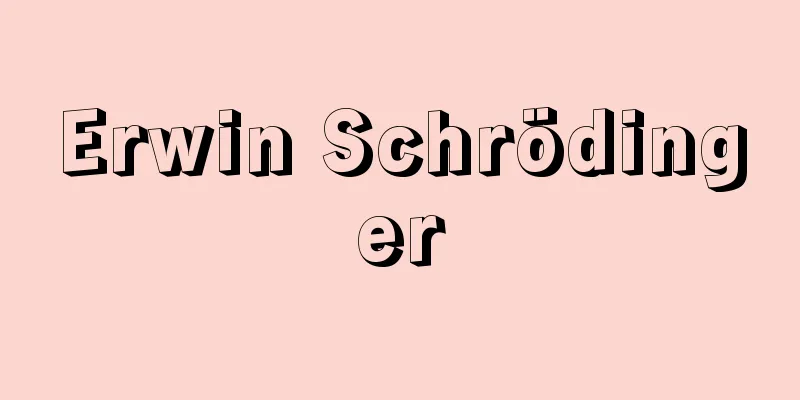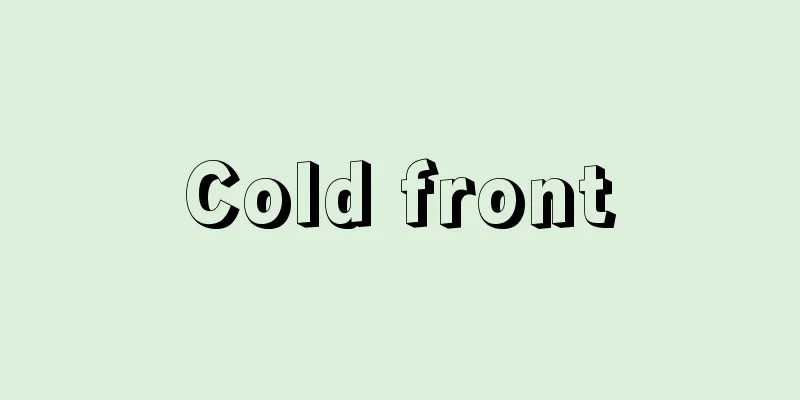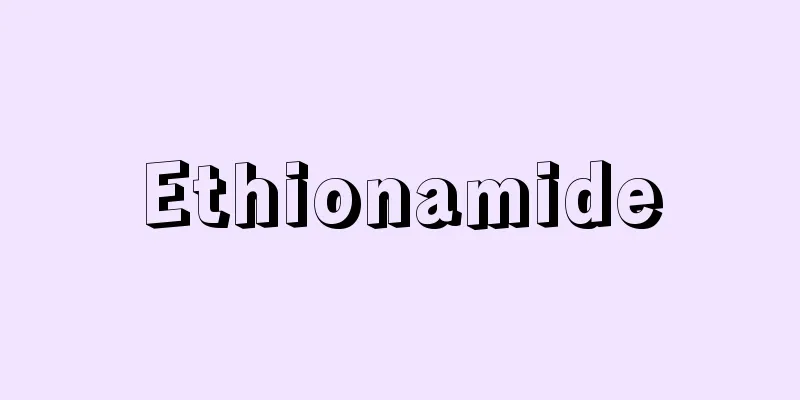Erwin Schrödinger

|
Austrian physicist. Founder of wave mechanics, he won the Nobel Prize in Physics in 1933 together with Dirac for "the discovery of a new form of atomic theory." Born in Vienna. From an early age, he showed interest and talent in many areas, and in addition to natural science subjects at gymnasium, he liked the strictness of classical grammar and the beauty of German poetry. In 1906, he entered the University of Vienna, where he majored in physics, but was strongly influenced by Boltzmann's successor as professor of physics, Friedrich Hasenöhrl (1874-1915), and through him he also became interested in Boltzmann. "Boltzmann's path was my first love in science," he later said. During this period, he studied eigenvalue problems in the continuum, which became the basis of his later achievements. He served in the military during World War I. In 1920, he went to the University of Jena, then to the universities of Stuttgart and Breslau, and in 1921 he became a professor of mathematical physics at the University of Zurich, where he stayed for six years. His colleagues included Weyl and Debye. He recalled that "this was the most fruitful and joyful period for me." During this period, his research gradually shifted from problems in the specific heat of solids and problems in thermodynamics to the study of atomic spectra. He also became passionate about physiological research on color, influenced by Helmholtz and others. His greatest work, the wave equation, was done in 1925-1926. In 1923, de Broglie proposed the idea of matter waves, which states that electrons also exhibit wave properties, and Schrödinger found in this idea a hint for constructing a new theory of atomic structure. Bohr's theory of atomic structure was considered the most convincing theory at the time, but the quantum conditions that appear in it, that is, its integer nature, seemed very unnatural to Schrödinger. If this integer nature is related to the integer nature that appears when a string vibrates, it will be the key to understanding the wave nature of electrons (electrons orbiting around atomic nuclei). If this idea is generalized, the essence of the idea of quantization will become clear. This was the idea behind wave mechanics. Starting from the Hamilton-Jacobi equation of classical mechanics, he solved a variational problem and obtained a partial differential equation containing a parameter representing energy. When he applied this to the hydrogen atom, the energy value matched that of Bohr's theory. In this way, the Schrödinger equation was established as the fundamental equation (1926), and since then, vigorous attempts have been made to develop wave mechanics. At the time, matrix mechanics had been developed by Heisenberg and others, but the calculation results of wave mechanics for harmonic oscillators, perturbation theory, the Stark effect, etc., were in good agreement with those of matrix mechanics. It is difficult to think that it is a mere coincidence that two mechanics with different concepts and theoretical forms should give identical results. He attempted to derive matrix mechanics from wave mechanics and succeeded in showing that the two are equivalent (1926), and this proof was soon completed by Dirac's "transformation theory," leading to the establishment of quantum mechanics, which unified the two. In 1927, he moved to the University of Berlin, but left Germany in 1933 with the rise of the Nazis, moving around to England, Austria, Italy, and other places before finally settling in Dublin and becoming a professor at the Institute of Theoretical Physics. During this time, he continued to research many topics, including unified field theory. He also wrote a book on biophysics called What is Life? (1944), and other books on science enlightenment, including Science and Humanism (1952) and Nature and the Greeks (1954). He was a solitary researcher who never had any collaborators throughout his life, and who followed his own path, true to his own beliefs. One anecdote that shows his character is that he walked from the station to the hotel during the Solvay Conference with a backpack containing his personal belongings on his back. [Jun Fujimura] "Schrödinger Selections, supervised by Hideki Yukawa, 2 volumes (1974, Kyoritsu Shuppan)" ▽ "What is Life?", translated by Koten Oka et al. (Iwanami Shinsho/Iwanami Bunko)" [References] | | | | | | | | | | | | | | | | | |Source: Shogakukan Encyclopedia Nipponica About Encyclopedia Nipponica Information | Legend |
|
オーストリアの物理学者。波動力学の建設者であり、1933年ディラックとともに「新しい形式の原子理論の発見」によりノーベル物理学賞を受賞。ウィーンに生まれる。少年時代から多方面に興味と才能を示し、ギムナジウムでは自然科学の課目のほか、古典語文法の厳密さ、ドイツ詩の美を好んだ。 1906年ウィーン大学に入学、物理学を専攻するが、ボルツマンの後任の物理学教授ハーゼンエールFriedrich Hasenöhrl(1874―1915)に強い影響を受け、彼を通じてボルツマンにも傾倒した。「ボルツマンの考えた道こそ科学における私の初恋といってもよい」と後年語っている。この時期、連続体の固有値問題の研究を行い、これが後の業績の基礎となった。第一次世界大戦では軍務に服した。1920年イエナ大学に行き、ついでシュトゥットガルト、ブレスラウの大学を経て、1921年チューリヒ大学の数理物理学教授となり、6年間在職。同僚にはワイルやデバイらがいた。「この時期こそ私にとってもっとも実り多く、喜びに満ちた時代」と回想している。このころ彼の研究は、固体比熱の問題、熱力学の諸問題からしだいに原子スペクトルの研究に移行していった。またヘルムホルツらの影響で色の生理学的研究にも一時熱中した。彼の最大の業績である波動方程式は、1925~1926年になされた。 ド・ブローイが電子も波動性を示すという物質波の考えを示したのは1923年であるが、シュレーディンガーはこの考えのなかに新しい原子構造論建設のヒントをみいだした。ボーアの原子構造論は当時もっとも説得力のある理論とされていたが、そこに現れる量子条件、つまりその整数性は、シュレーディンガーにはいかにも不自然に思われた。この整数性と、弦の振動の際に現れる整数性とを関連させて考えれば、電子(原子核の周りを回っている電子)の波動性の解明の鍵(かぎ)となろう。このような考えを一般化すれば量子化の考えの本質が明らかになるであろう。これが波動力学の発想であった。 古典力学のハミルトン‐ヤコービ方程式から出発して変分問題を解き、エネルギーを表すパラメーターを含む偏微分方程式を得た。これを水素原子に応用した結果、エネルギーのとる値はボーア理論のものと一致した。こうして基礎方程式としてのシュレーディンガー方程式が確立され(1926)、以後波動力学の精力的な展開が試みられたのである。 当時、ハイゼンベルクらによる行列力学があったが、調和振動子、摂動(せつどう)論、シュタルク効果などについての波動力学の計算結果は行列力学によるものとよく一致した。考え方も理論の形式も異なる二つの力学が同一の結果を与えるというのは、単なる偶然とは考えがたい。波動力学から行列力学を導くことを試み、両者が同等であることを示すのに成功(1926)、この証明はまもなくディラックの「変換理論」によって完全にされ、両者を統合した量子力学の成立をみることになった。 1927年ベルリン大学に移ったが、1933年ナチスの台頭とともにドイツを去り、イギリス、オーストリア、イタリアなど各地を転々とし、最後にダブリンに落ち着き、理論物理学研究所の教授となった。この間、統一場の理論を含む多くの課題を研究し続けた。また生物物理学の考察から『生命とは何か』(1944)を著し、『科学とヒューマニズム』(1952)、『自然とギリシア人』(1954)などの科学啓蒙(けいもう)書もある。 生涯を通じて共同研究者をもたず、自己の信念に忠実に、独自の道を歩んだ孤高の研究者であった。ソルベー会議の際、身の回り品を入れたリュックサックを背に駅からホテルまでを歩いた姿が、彼の人柄を示す逸話として語られている。 [藤村 淳] 『湯川秀樹監修『シュレーディンガー選集』全2巻(1974・共立出版)』▽『岡小天他訳『生命とは何か』(岩波新書/岩波文庫)』 [参照項目] | | | | | | | | | | | | | | | | | |出典 小学館 日本大百科全書(ニッポニカ)日本大百科全書(ニッポニカ)について 情報 | 凡例 |
>>: August Ludwig von Schlözer
Recommend
Acanthosomatidae
…General term for insects in the family Acanthoso...
Askhabad
…It is located 40 km from the Iranian border, in ...
Asahi (kiln) - Asahi
...Seven kilns that are said to have been supervi...
Optimal strategy
…In this case, the question of whether to give bi...
Omri
King of the Kingdom of Israel (reigned 884-876 BCE...
Jinghpaw
...One of the ethnic minorities who live mainly i...
Nierembegia repens (English spelling)
… [Munemin Yanagi]. … *Some of the terminology th...
Socialist Association - Shakaishugikyokai
A socialist research and practice group in the Me...
Infinite series - mugenkyuusu
A series with an infinite number of terms. General...
Amantis nawai (English spelling)
... The Hierodula patellifera (illustration) is 5...
Outdoor tea ceremony
This refers to making tea outdoors, or a tea cere...
Daulatabad (English spelling)
A fort in the northwest of the Deccan Plateau in I...
Kanda Shori
…(2) The second generation (1843-1921, Tempo 14-T...
Temple and shrine chanting
〘Noun〙 (also "jisha denso") One of the p...
Haloragaceae
...It is said to be effective for reducing fever,...









